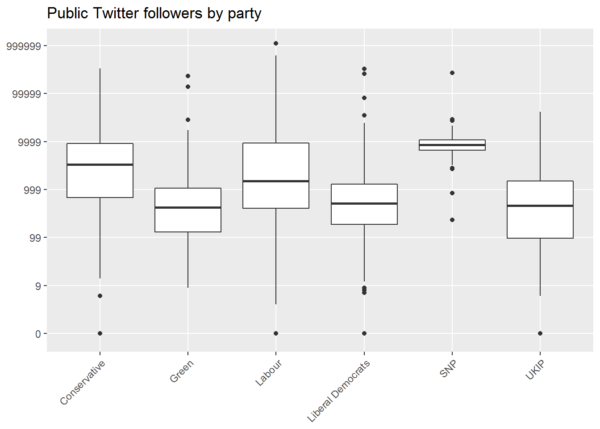Just over half a year ago, the Telegraph carried out an analysis appearing to show that ‘the Labour leader’s shadow cabinet d[id]n’t have as wide a reach as their opposite numbers on Twitter’. This conclusion was arrived at by comparing ministers and shadow ministers whose roles were directly parallel: ‘[Jeremy] Corbyn has more followers than Theresa May, while Diane Abbott saw off Amber Rudd, John McDonnell beat Philip Hammond and Keir Starmer edged out David Davis’, but with regard to the others, ‘the Government enjoyed a clean sweep of the board’ (ibid.).
This is interesting, but I don’t find it satisfactory. The Conservative Party’s best known and most popular politicians were mostly in the cabinet. But while Corbyn himself remains the Labour Party’s biggest social media star, its second- and fourth-most popular MPs on Twitter were and are excluded from the shadow cabinet by virtue of not being Corbyn loyalists, while the third-most popular has technically remained a shadow cabinet member but was excluded from the Telegraph’s analysis by virtue of having no Tory opposite number.
So what happens if we look at the public followers of all prospective parliamentary candidates? This happens. (Figures collected in the week before the General Election for a different purpose and re-used here. Small parties excluded. If you want code, here’s my notebook. Hat tip to Democracy Club for its crowdsourced list of politicians’ social media accounts.)
